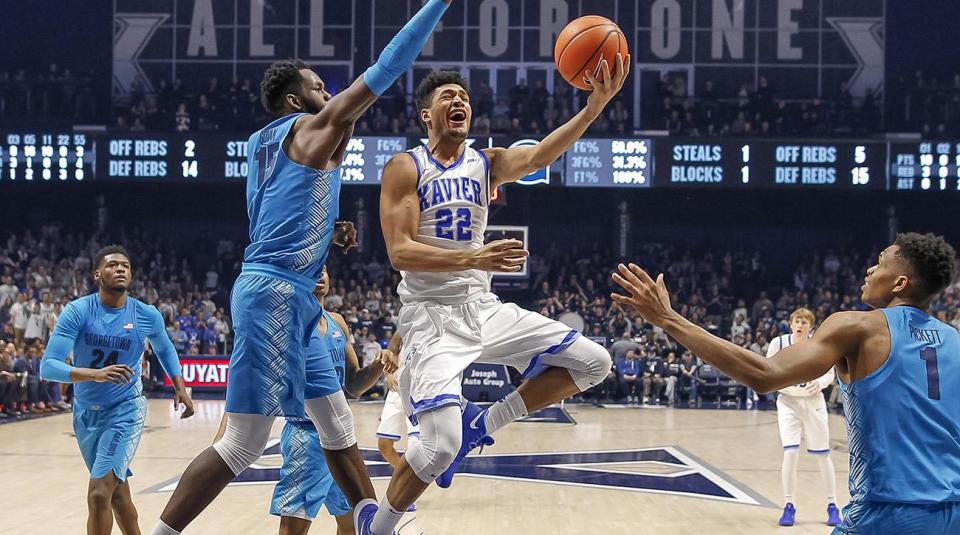YouTube and Amazon are fighting for sports streaming supremacy
YouTube last week announced a slew of new additions to its YouTube TV streaming service: Turner channels including TBS, TNT, and TruTV; NBA TV and NBA League Pass; MLB Network and MLB.tv; and regional sports networks in some markets from Fox Sports, NBC Sports, and NESN.
TBS, TNT, and TruTV mean NCAA March Madness basketball games, and golf’s PGA Championship. NBA TV means nationally televised regular-season NBA games. MLB Network means baseball news programs and baseball games. And add the Turner channels to ABC, ESPN, NBC, NBC Sports Network, Golf Channel, CBS, CBS Sports Network, Fox, FS1, and ESPN, all of which are also on YouTube TV in some form.
The additions instantly make YouTube TV a far more attractive offering to cord-cutting sports fans, and parent company Alphabet knows it. That’s why it’s raising the subscription price from $35 per month to $40 per month beginning on March 13. As YouTube boasted in the title of its own blog post, the service has “got game.”
But YouTube is hardly the only player in the race to buy live sports streaming rights.

Everyone wants in on sports streaming
The menu for over-the-top sports content is rapidly expanding. Dish Network’s Sling TV offers packages with an array of NBA and college basketball games thanks to deals with NBC and Fox regional sports networks (which are all soon to become Disney-owned), and has regular-season MLB games thanks to deals with about 20 of the 30 teams. (Sling does not have CBS.) AT&T DirecTV Now has ABC, CBS, NBC, Fox and FS1, ESPN and ESPN2, and the Turner channels, but NBA TV, which YouTube TV just added, is only in its more premium package.
ESPN, arguably the No. 1 biggest cable gem for sports fans, has now licensed its programming to a slew of different OTT services, including Sling, DirecTV Now, YouTube TV, Sony PlayStation Vue, and Hulu with Live TV.
ESPN has also announced its own OTT product, ESPN Plus, which will launch this spring and price at $5 per month, but will not offer the ESPN cable channels over the top. Rather, the app will have additive live sports content, like tennis and cricket.
But YouTube TV’s biggest competitor at the moment for sports streaming primacy is likely Amazon Prime, more than any OTT package from a traditional cable company. Amazon, the omnivore terrorizing almost every industry, outbid Twitter for the right to stream 11 Thursday Night Football games this season. In November, it added the ATP streaming channel Tennis TV and it is reportedly very close to buying a Premier League soccer package.
In December, Juniper Research issued 10 tech predictions for 2018 and led its list with, “Amazon and Facebook lead OTT bids for major sporting rights.” That is shaping up to be half right: it’s Amazon and YouTube leading the pack for now. (Facebook has streamed a few college football games and a few MLB games; as SportTechie aptly writes, its live sports strategy “has been piecemeal and tentative.”) But it’s also still early in the race.
The NFL remains the biggest enigma amidst all these rights. It sold a season of Thursday Night Football streaming to Twitter; then it sold a season of Thursday Night Football streaming to Amazon. Now, it has announced a deal with Verizon to stream every national regular-season NFL game to smartphones over the Yahoo Sports app, regardless of your mobile carrier. The deal is only for smartphones, not tablets or desktop computers. That still leaves the NFL open to again sell a Thursday Night Football streaming package to someone else, and indeed, Bloomberg reports that Amazon, YouTube, and Twitter all want to bid.
The bigger questions: How soon might the NFL sell some package of streaming rights beyond just Thursday Night games, and to whom, and for how much? And will it continue to arrange streaming contracts piecemeal (i.e. sell only Thursday games to one partner, sell only smartphone rights to another), or could it eventually sell to Amazon or YouTube a kitchen-sink deal to stream every game? If and when that day comes, expect such rights to get extremely expensive, because despite two seasons in a row of ratings declines, big corporate advertisers still see the NFL as the best bet in town, and “football is football.”
Still cheaper than cable?
All of the many new OTT subscription options out there look nice on their own, but add up the costs, and ironically, traditional cable starts to look pretty good. If a typical cord-cutter is paying for Netflix ($10 per month), Hulu Plus ($10 per month), Amazon Prime ($12.99 per month), and YouTube TV ($40 per month) just to avoid paying for cable, you start to get pretty close to the current average $110 monthly cost of a cable subscription.
Of course, there’s arguably also a mental appeal to canceling your cable bill, untied to savings. The act of unbundling has caught on not just because of the decline in viewership for live television, but also because U.S. consumers are demanding more options. Canceling cable feels good — even if, once you add up all the different over-the-top subscriptions, the monthly savings are negligible.
Still, it is possible that as streaming packages multiply and get more complicated, too many choices could swing the pendulum back the other way, in cable’s favor.
—
Daniel Roberts is the sports business writer at Yahoo Finance. Follow him on Twitter at @readDanwrite.
Read more:
Amazon’s NFL streaming is all about collecting ad data
Verizon strikes extensive deal to stream NFL games on smartphones
